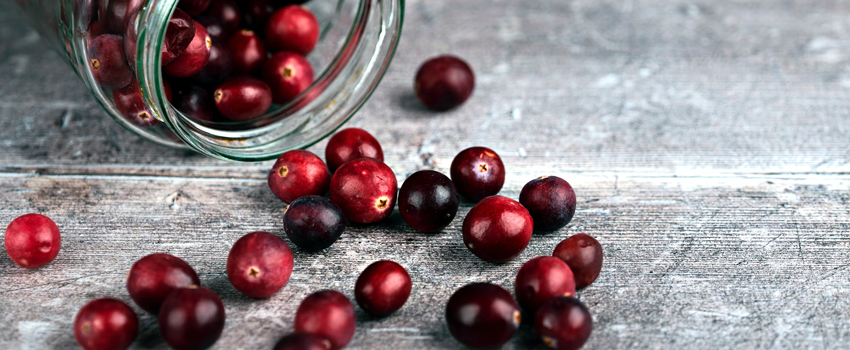Women are more susceptible to urinary tract infections (UTIs) than men and 20-30% of women have recurrent UTIs. Pregnant women, children, postmenopausal women with genitourinary syndrome of menopause (GSM), elderly individuals with indwelling catheters, and patients with neuropathic bladder are at increased risk of UTIs. They are prevalent in young women and men and increase with age.
Cranberry (Vaccinium macrocarpon, Ericaceae) supplementation has been used as a solo and adjuvant therapy to treat and prevent UTIs. Cranberry is rich in A-type proanthocyanidins (PACs), anthocyanins, benzoic acid, and ursolic acid. The current systematic review and meta-analysis was done to evaluate the effects of cranberry intake for preventing and treating UTIs in susceptible populations.
Preferred reporting items for systematic reviews and meta-analyses (PRISMA) guidelines were followed. Articles were included that were randomized controlled trials comparing cranberry-containing products to a placebo or non-placebo control group as well as studies using susceptible populations. Studies were excluded if treatment included cranberry in combination with another bioactive compound. No animal studies, case reports, review, conference papers, editorials, or studies with insufficient data were included.
A total of 3431 studies were identified. After all of the study exclusions, based on set criteria for this meta-analysis, 23 studies with sufficient data made the cut. Most of the study populations were from hospital clinics and included women with recurrent UTIs, neuropathic bladder, children, pregnant patients, elderly patients, and patients with indwelling catheters.
The type of cranberry products used differed in form, manufacturer, dosage (0.4 to 194.4 g daily), proanthocyanidin (PAC) content, and dosing frequency. Fifteen trials used cranberry juice, one used both cranberry juice and tablets, and 12 used cranberry capsules. Dosage was not reported in 11 trials. The presence of UTI symptoms was not required in 11 trials and baseline bacteriuria thresholds ranged from ≥ 103 to ≥105 CFU/mL.
The meta-analysis included 3979 patients from 23 trials with 1978 patients in the cranberry groups and 2001 patients in the placebo or control groups. The risk of recurrent UTIs in the estimated weighted risk significantly reduced in the cranberry groups compared to the placebo or control groups (P < 0.01).
Subgroup analysis found that cranberry juice was more effective than cranberry capsules or tablets. Subgroup analysis did not find that cranberries significantly reduce recurrent UTIs in neuropathic bladder, pregnant, and elderly patients.
Several limitations with this systematic review and meta-analysis included insufficient information in several studies and one study used a combination of cranberry juice and lingonberry (Vacciuium vitis-idaea, Ericaceae) juice. Another issue was that there was a lack of consistency among the doses of PACs. Despite these issues, the authors concluded that cranberry supplementation significantly reduced the incidence of UTIs in susceptible populations.
Commentary: Cranberries have been used widely for several decades for the prevention and treatment of UTIs. This meta-analysis is not exactly a showcase for cranberry. An updated Cochrane Review of 2012 included a total of 24 studies (six cross‐over studies, 11 parallel group studies with two arms, five with three arms, and two studies with a factorial design) with a total of 4473 participants. Ten studies were included in the 2008 update, and 14 studies have been added to this update. Thirteen studies (2380 participants) evaluated cranberry juice/concentrate; nine studies (1032 participants) evaluated cranberry tablets or capsules; one study compared cranberry juice and tablets; and one study compared cranberry capsules and tablets. Data included in the meta‐analyses showed that, compared with placebo, water or no treatment, cranberry products did not significantly reduce the occurrence of symptomatic UTIs overall (RR 0.86, 95% CI 0.71 to 1.04) or for any of the subgroups: women with recurrent UTIs (RR 0.74, 95% CI 0.42 to 1.31); older people (RR 0.75, 95% CI 0.39 to 1.44); pregnant women (RR 1.04, 95% CI 0.97 to 1.17); children with recurrent UTIs (RR 0.48, 95% CI 0.19 to 1.22); cancer patients (RR 1.15 95% CI 0.75 to 1.77); or people with neuropathic bladder or spinal injury (RR 0.95, 95% CI: 0.75 to 1.20). The effectiveness of cranberry was not significantly different to antibiotics for women (RR 1.31, 95% CI 0.85, 2.02) and children (RR 0.69 95% CI 0.32 to 1.51). Personally, I’ll take not significantly different than antibiotics any day when it comes to UTIs. Once again, there were no reports in most of the studies as to other cranberry products (tablets and capsules) how much of the ‘active’ ingredient the product contained, and therefore the products may not have had enough potency to be effective.
Some of the small studies do demonstrate a small benefit for women with recurrent UTIs. Cranberry products were not significantly different to antibiotics for preventing UTIs in three small studies. Again, I’ll take that as a win for cranberry.
I think most practicing naturopathic and integrative medicine clinicians do not use cranberry alone. I count on the anti-microbial effects of berberine, especially when E. coli is involved, and herbal diuretics such as buchu or dandelion leaf. When treating women with genitourinary syndrome of menopause (GSM), which includes women with atrophic vulvovaginal tissue, vulvar and or vaginal low dose estrogen is an ESSENTIAL part of the plan to restoring urogenital health and helping to proliferate lactic acid producing lactobacilli in the vagina and thus the bladder. We can also use these urogenital specific lactobacilli as part of the supplement regimen as well.
Reference:
Xia JY, Yang C, Xu DF, Xia H, Yang LG, Sun GJ. Consumption of cranberry as adjuvant therapy for urinary tract infections in susceptible populations: A systematic review and meta-analysis with a trail sequential analysis. PloS One. September 2021;16(9)


